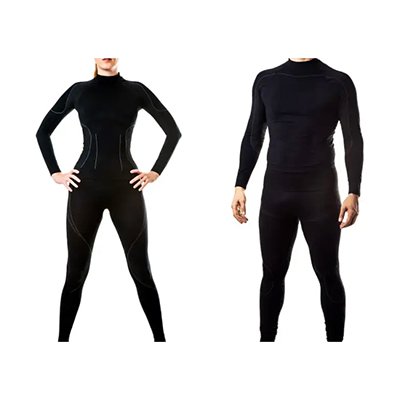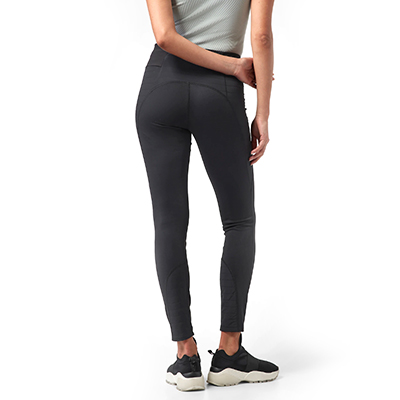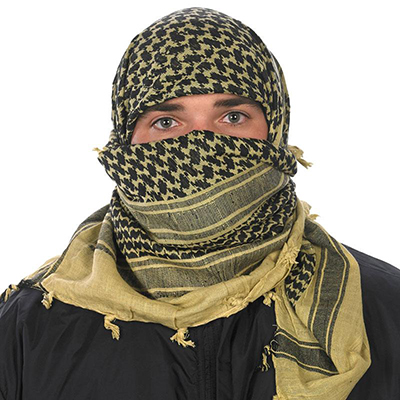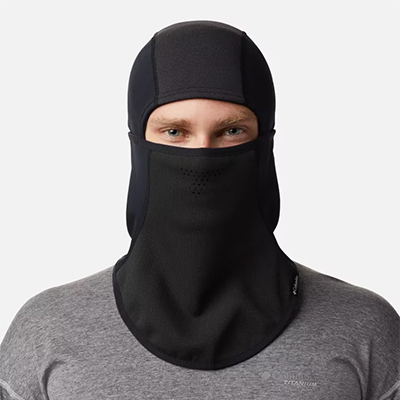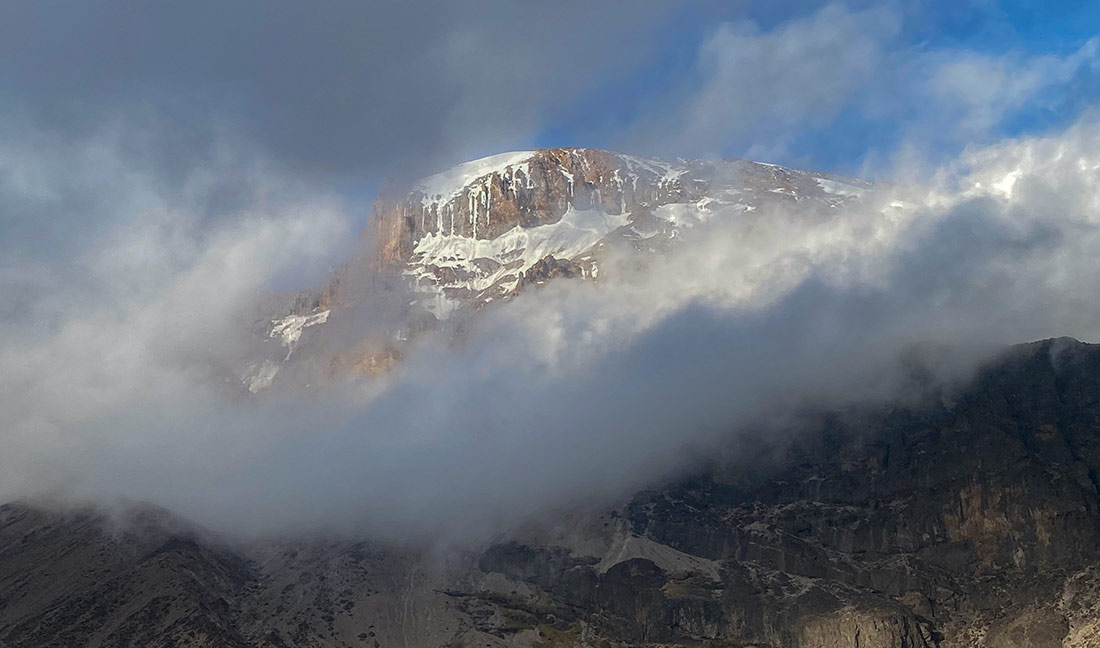One of the items we hear about quite a bit from our clients is that they were not warm enough on Kilimanjaro.
First of all, you need to know that despite being in Africa, Kilimanjaro is a tall mountain. Do you know of any tall mountains—over 15,000 that are not cold? Maybe Skadi Mons (Maxwell Montes massif) which is 35,000 feet above the mean radius, but that is on Venus, So no, there are no mountains on Earth that are 19,341 feet and not cold. Even Mauna Loa on the island of Hawaii may be considered cold. It is 13,679 feet and its average temperature is in the high 40s.
Now that you know it’s cold, how do you stay warm on Kilimanjaro? Kilimanjaro is a tall mountain, and because of this, it creates its weather pattern. You’ll see it while you are there. Clouds will constantly cover the peak. You may catch glimpses of the summit from Arusha. The clouds do tend to “burn off” near sunset.
The same goes for while you are on the mountain. The first day or so, route dependent, you’ll be below the clouds in the rain forest. Once you get above them, you’ll then get to see the summit. Again, usually in the late afternoon.
Rain Gear
Since Kilimanjaro creates its own weather patterns it is unpredictable. The first thing you need to do to prepare is to bring rain gear. It can rain at any point on your trek. Day one and the last day are in the rainforest, so the chance of rain there is high.
Additionally, depending on the month, you can also receive rain at any time of the day or night. Don’t worry, our tents are waterproof.
See the chart below for the wetter versus the drier months.
| MONTH | TEMPS | RAIN | CLOUDS | CROWDS | |
|---|---|---|---|---|---|
 |
January | Warm | Medium | Low | High |
 |
February | Warm | Medium | Low | High |
 |
March | Moderate | High | Medium | Low |
 |
April | Moderate | High | High | Low |
 |
May | Moderate | High | High | Low |
 |
June | Cold | Medium | Medium | Medium |
 |
July | Cold | Medium | Low | High |
 |
August | Cold | Low | Low | High |
 |
September | Moderate | Low | Low | High |
 |
October | Moderate | Low | Medium | Medium |
 |
November | Moderate | High | Medium | Low |
 |
December | Moderate | Medium | Medium | Medium |
 Best Best |
 Okay Okay |
 Not Recommended Not Recommended |
In your day pack, you should have a rain jacket. You’ll carry this every day, in case. It should breathe too, you don’t want to block out the rain only to be soaked underneath because it was too hot inside the jacket. Many rain jackets come with armpit vent zippers and are made from Gore tex.
You can also bring waterproof pants. They work not only for the rain but if the snow is deep on Summit night. Again, make sure they are breathable to avoid sweating too much.
Base Layers
Once you are waterproofed, the next step in staying warm is to have a couple of good base layers. You should have a pair for summit night and a pair for sleeping in once it gets cold. Cold is relative to the person. But once you are above the rainforest, on the Shira Plateau, for example, the temperatures can dip below freezing at night.
Top layers. Above the base layers, you’ll want a t-shirt or long sleeve and convertible pants. That way, if you need to take off layers above these, you’ll still have hiking clothes on. The top should be a quick drying moisture-wicking shirt. The pants should be nylon hiking pants.
Insulating Layers
Above The wicking shirt, you can also wear an insulating layer. This can be a fleece, a thin pullover, or a puffy jacket.
Top Layer
Finally, over everything, wear a hard shell. It should be not only waterproof but windproof as well. It should also have a hood. The wind, especially on Summit night can get inside your layers and make it uncomfortable.
If you don’t have a hard shell, we rent jackets.
Furthermore, you can wear your insulating layer with your rain jacket. But it won’t protect as well from the wind.
Extremities
Now that we have your body nice and warm, we now have to address the extremities—hands, feet, neck, and head.
Hands
For cool days, a pair of thin gloves are nice. For summit night we recommend mountaineering, ski or snowboarding gloves, or mittens. You’ll probably be using trekking poles and your hands will be exposed.
Feet
For your feet, we recommend wearing a combination of a tall warm sock, like Darn Tough or ski socks. Combined these with a liner like an Injinji or Smart wool.
For most days on the mountain, a trail runner or light hiker is ideal. However, on summit night a taller, mid-height boot is better. They should be broken in, fit with two pairs of socks, and be Gortex.
Neck
For your neck, to block the wind, we recommend a Shemagh, balaclava, scarf, or neck gaiter (buff). You may also want to pull it up over your face, below your eyes. You should also tuck it into your jacket.
Head
A good, cold weather beanie works best to block the cold and wind. It can be wool or fleece.
Camp
At camp, you can get especially cold since you are sitting around for hours. To stay warm, you can sit in the dining tent or your tent. You can wrap the sleeping bag around you, but that isn’t ideal. Instead, bring fleece-lined camp slippers (your sore feet will thank you). Bring a fleece or down pants and a warm fleece to put on once you have given yourself a hobo bath. You’ll be able to do this in the provided warm water and wipes you should have packed.
Final Thoughts
Following these guidelines should keep you nice and toasty on your Kilimanjaro climb. We hope you are and that all you have to say about your trip is that it was amazing and one of the greatest moments of your life.

